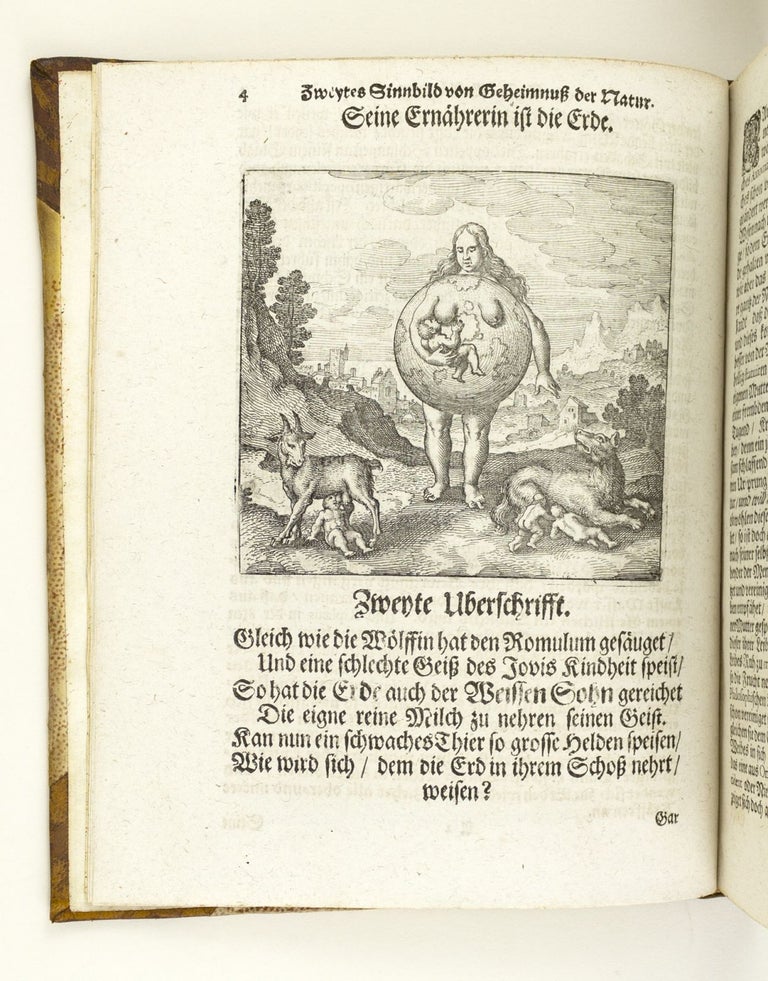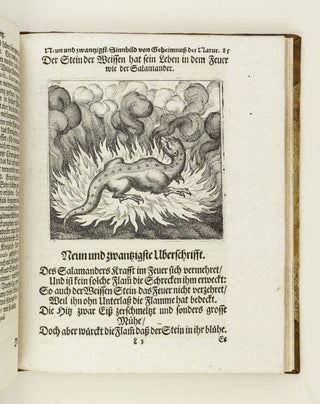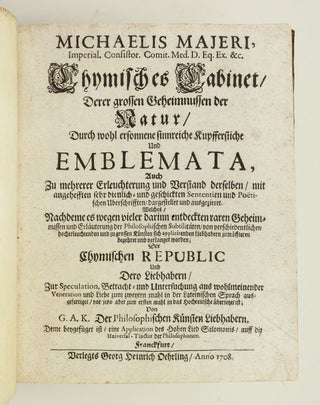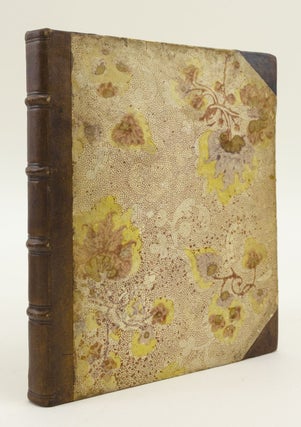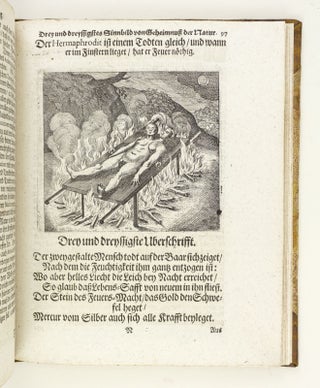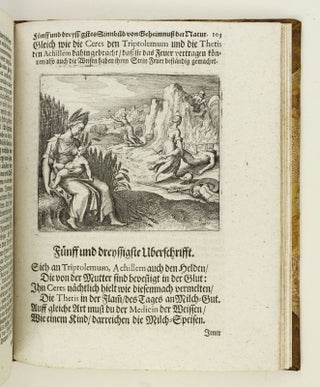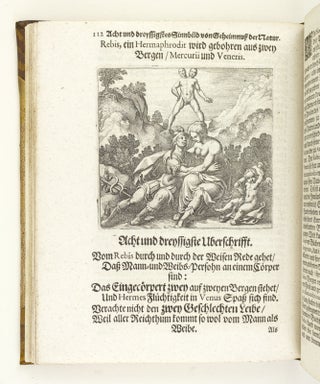CHYMISCHES CABINET DERER GOSSEN GEHEIMNUSSEN DER NATUR DURCH WOHL ERSONNENE SINNREICHE KUPFFERSTICHE UND EMBLEMATA.
(Frankfurt: Georg Heinrich Oehrling, 1708). 202 x 160 mm. (8 x 6 1/4"). 2 p.l., 151, [2] (blank), 152-53 pp. First Edition in German.
Original patterned paper boards and calf corners, expertly and sympathetically rebacked with unadorned calf, raised bands. WITH 50 FINE COPPER-ENGRAVED EMBLEMS BY MATTHÄUS MERIAN THE ELDER. Front pastedown with engraved "Mannington Hall" bookplate of English diplomat Horatio Walpole (1678-1757). Ferguson II, 63; Duveen 385; Landwehr, "German Emblem Books" 413; Kindlers Neues Literatur Lexikon X, 886; Nummedal, "How to Read the Alchemical Corpus" (introduction to the digital edition at the Max Planck Institute); Thorndike VII, 173. ◆A little soiling to boards, but the binding solid and not without appeal, leaves lightly washed, one small rust spot to text, one ink stain obscuring a couple of letters, but AN EXCEPTIONALLY PLEASING COPY, the text especially clean, with excellent impressions of the engravings.
Using the same Merian engravings created for the 1617 original printing (entitled "Atalanta Fugiens"), this is the second edition and the first in German of a work described by Kindlers as "indisputably the most beautiful, the strangest and most inventive work of 17th century esoteric alchemy." Maier begins with the myth of Atalanta told in Ovid's "Metamorphoses" and then brings in poetry, music, alchemical symbols, and emblems. This "Chemical Cabinet" presents 50 emblems, "each containing a motto, a copper plate engraving by the renowned Matthäus Merian, an epigram (in German and Latin), an accompanying fugue (or canon) for three voices, and a discourse explicating the emblem’s alchemical meaning. The parts of each emblem and the book as a whole are meant to work together, with the music, image, and text as an interlocking guide to alchemical theory and to the production of the philosophers' stone. The multimedia 'Atalanta fugiens' was meant not only to link sound, sight, and intellect, but also to spark discussion and laboratory practice, making it an intriguing point of entry into an examination of the place of reading and writing—and their relationship to other bodily ways of knowing—in the production of early modern knowledge." (Nummedal, introduction to "Project Atalanta," the Max Planck Institute's digital edition of "Atalanta Fugiens") German physician, courtier, and alchemist Michael Maier (1568-1622) studied medicine at Padua and at the University of Basel, and he served as physician and counselor to Holy Roman Emperor Rudolf II. According to Thorndike, "Maier was a Rosicrucian and gained Robert Fludd for that fraternity"; DSB notes that he "helped to organize the publication of the works of Fludd in Frankfurt . . . [and] probably had a hand in the publication of the 'Fama Fraternitatis' (1616)." This is a scarce edition in commerce (and a good deal rarer than the dramatically more costly first edition): ABPC and RBH record seven other copies sold at auction in the past 50 years. This book (and books like it) almost never turn up in decent condition, let alone as pleasing as the present copy. (ST16190)
Price: $24,000.00

